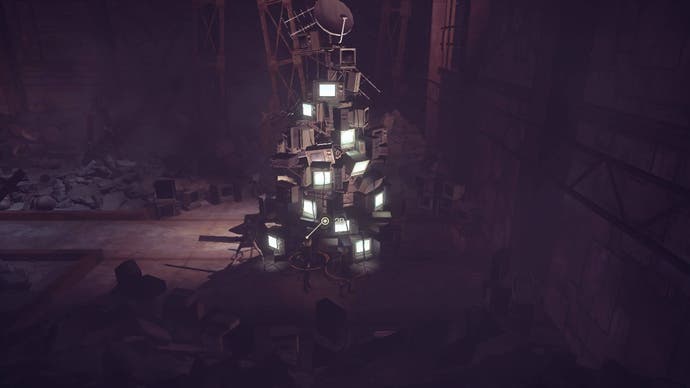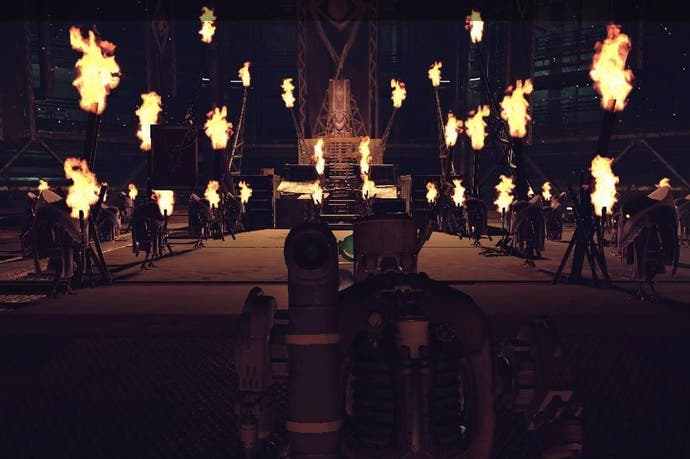Why you should play Nier: Automata after the first playthrough
If you thought Return of the King had a lot of endings...
[Note: This piece contains many spoilers for Nier: Automata's structure and mechanics, though plot spoilers are kept to a minimum. There are still some though, so if you're already a Nier convert and know you're going to play Automata beyond the credits, you may want to avert your eyes.]
First things first: you don't need to play Nier: Automata four times to get its true ending. That's a myth - one based on the first Nier that actually did require such a task. No, instead Nier: Automata is comprised of four different campaigns, which is a very different situation.
The funny thing is that Nier: Automata doesn't advertise three of these campaigns. It politely requests that players stick around after the credits to unveil the full story (really, there actually is a post-credits message suggesting this), but it doesn't outright tell you what you'll see if you keep playing, just as Konami audaciously didn't inform anyone about Castlevania: Symphony of the Night's second castle upon release. The point is for the player to discover Nier: Automata's secret second act. And then its third act. And its fourth.
Many won't see any of this though. After all, it's not unusual for people to put a game back on their shelf (or return a rental copy) once they roll credits, and ploughing through an additional playthrough sounds like a big ask. But stick with it, because the new additions aren't secondary stuffing drip-fed out to pad the length of a brief adventure, but rather the entire second half of an intriguing opus.
Here's how the game is structured: For the first dozen or so hours you play as android 2B, a man-made creation sent to earth to rid the world of pesky machines spawned by an alien invaders. There are many fascinating twists and turns along the way, but when you fell the big bad it seems like the journey is over, even if it ends on a mild cliffhanger involving the perplexing fate of your sidekick, scanner android 9S. But this is 2017, so naturally this a ploy for players to demand a sequel (or for the publisher to sell DLC), right?
Wrong.

Instead, continuing the story retells the same events, only this time from the perspective of 9S. The beauty of this is that there are lengthy patches of the adventure where 2B and 9S are separated, meaning that while roughly 60 per cent of 9S's journey mirrors that of 2B's, there are large swathes of entirely new content. We see this in the very first mission as 9S goes through various permutations of bullet hell shmups (including a new twin-stick shooter setup using a weirdly effective behind-the-shoulder perspective) to launch an assault on a factory that 2B infiltrated through a more traditional third-person hack-and-slash sequence. Such drastic changes are not uncommon in this subsequent campaign.
Better yet, 9S plays much, much differently to 2B. Rather than unleashing a heavy melee attack with the triangle button, he hacks into foes transforming the combat from a character action game into a top-down retro twin-stick shooter in which you control an abstract triangle shooting nefarious spheres, cylinders, cones and cubes. Succeed in these very brief mini-games and your foe will take massive damage when the perspective switches back to the more traditional third-person action. Fail, and you'll suffer a hit. And the difficulty of these mini-games it tied to the enemy type and their level so tougher foes will place you in more challenging arcade arenas, should you try hacking them.
Beyond that, you later learn to hack unsuspecting foes to either take control of them or recruit them to fight by your side. This doesn't happen though until pretty far through 9S's campaign, ensuring that even when it seems like you're going through the motions the developer still has new tricks up its sleeve.
The hacker angle also unveils new story bits as 9S can look inside the digital psyche of various bosses. Showstopping foes who were cryptically impressive the first time around now hint at tragic backstories, fleshing them out from cool character designs to actual developed characters. To wit: an eerier ballerina adorned with the corpses of her fallen android prey is given a harrowing origin barely hinted at in a first playthrough.
So that's the second campaign. Loads of new stuff, but still partially a retread with many of the same bosses and setpieces repeating themselves from your first playthrough. But it's after that that things really start feeling fresh. For it's only once you've completed 9S's campaign that you get to play the entire final third of the game.

As it turns out, this so-called "third playthrough" isn't a new playthrough at all, but rather the chronological continuation of where 2B and 9S's stories originally ended. What seems like it's going to be a brief epilogue consisting of a final chapter quickly spirals into a another 12 hour campaign.
A lot happens in this expansive campaign. New stages emerge on the world map you thought you'd already exhausted. New bosses show up. Numerous new plot developments are unveiled. There's even dozens of new side quests. During this time all the retreading you did during 9S's campaign fades into distant memory as you're repositioned into the climax of an epic Japanese action RPG.
And even this third campaign branches off into uncharted territory as now, tens of hours deep (and a lot more if you're playing on Hard mode), you're introduced to a third playable character with their very own unique storyline. The twists! They just keep coming!
And keep coming they will! Even after you've unlocked the conclusions to each of these four campaigns, there's still a final surprise waiting for you in the end credits. And an even more devious surprise after that, based on your choices during a post-credits coda (pro-tip: when it asks you if you'd sacrifice all of your save data to help another random player, it's not kidding).
Even after all of this there's still a lot more to find in Yoko Taro's bonkers world. There are 21 goofy novelty endings, loads of sidequests, plenty of hidden lore, secret weapons, etc. But that's all to be expected in an expansive RPG such as Nier: Automata. That literally half of the game's main adventure is tucked away behind a convincingly climactic credits roll is far more aberrant.

While Nier: Automata does require players retread some of the same territory in a subsequent playthrough, Yoko Taro and Platinum Games are so inventive in how they transform this ever-expanding epic that those who persevere are greatly rewarded. One might question why the developer did this at all. Why not simply make it one chronological campaign that has players switch roles throughout the adventure? Or at least, why not advertise it as a Rashomon-esque game ala Odin Sphere, another Japanese action-RPG revolving around synchronous stories (and one vastly more repetitive than Nier: Automata)?
My belief is that Taro and co. wanted people to stumble into this. The eccentric director already stated in interviews that those who only play through the game once have "not even seen half of the story", but it wasn't clear what that meant. Would you have to play through the game multiple times just for a new ending or two? Would the post-game only offer more narrative nuggets, but little else? Could you simply look up the new content on YouTube and not miss out on much? Answer: No. No. And no.
Based on Taro words - and the first Nier - unearthing Nier: Automata's convoluted story sounded like a lot of busywork. Who has time these days to play through a sprawling RPG multiple times? But behind this veil of drudgery lies the bulk of Nier: Automata's endlessly astonishing charms.









